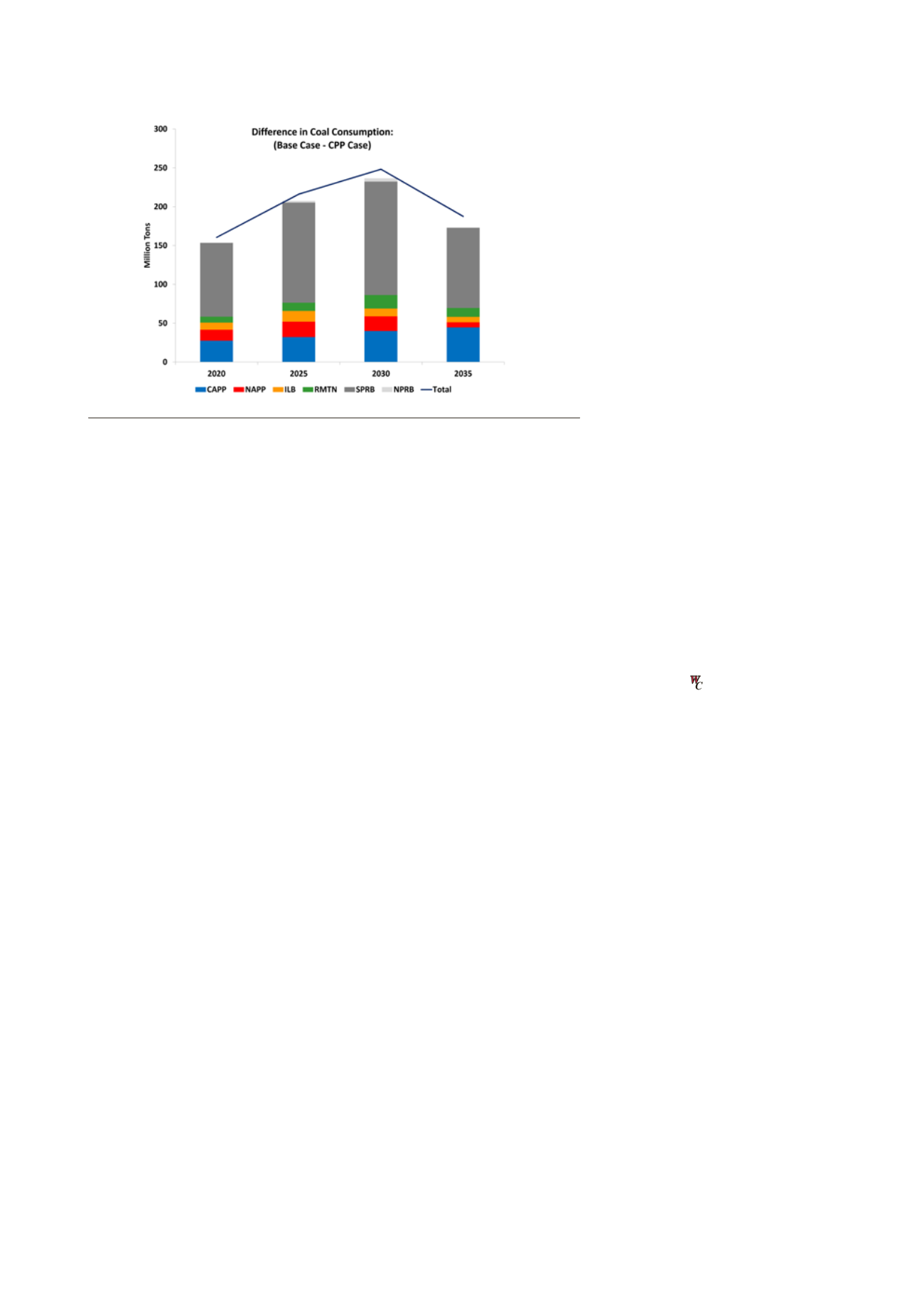
backed down to approximate a 6%
improvement in output emissions. ABB
also discovered that a US$15/t CO
2
price
was necessary to meet the national
reduction target. Modelling reflects the
ability to retrofit existing coal facilities
with CCS based on economics. However,
based on current CCS cost assumptions,
the level of carbon pricing does not
support CCS either on existing or new
coal units. This highlights the potential
drawback of not providing incentives for
all of the available CO
2
reduction
mechanisms.
Will the CPP be challenged
on a statutory basis?
Legal experts disagree over the extent to
which the rule is legally defensible
according to the language and precedent
of the Clean Air Act. There appear to be
two primary legal questions in play. One
is whether the EPAhas the authority to
regulate CO
2
emissions under Section
111(d). The second question, which is
connected, is around the definition and
the EPA’s interpretation of the ‘best
system of emission reduction.‘
The EPAdraws its authority to
regulate CO
2
emissions based on Section
111(d) of the CAA. Section 111(d) allows
the EPA to create a ‘standard of
performance’ for existing sources not
already regulated under Section 112.
Existing plants are already regulated
under Section 112 by the MATS rule.
However, when the act was amended in
1990, separate versions of Section 111(d)
were drafted and signed into law by the
House and Senate. The Senate version
states that the EPAdoes not have the
authority to regulate pollutants listed
under Section 112, whereas the House
version disallows regulation of sources
already controlled under Section 112. It
is unclear at this point which version
would prevail during litigation, but
several legal analyses have pointed out
that legal precedent does not appear to
be in the EPA’s favour.
4
The cornerstone of the EPA’s
proposal is in its interpretation of the
best system of emission reduction. The
agency has written the new rule with the
intention of reducing emissions from an
interconnected electricity system, which
allows a great deal of flexibility in how
emissions are reduced. Opponents argue
that this approach has no real precedent
and that the EPAhas been inconsistent
in applying the definition of a best
system, taking a source-specific
approach to CO
2
emissions in the NSPS,
while applying a different definition of
‘system of emission reduction’ in the
CPP. The impending legal battle will
almost certainly delay implementation,
but the likely outcome of the courts is far
from clear and may depend as much on
who is chosen to hear the case as on the
content of the legal arguments
presented.
Uncertainty rules the future
Since interest in developing coal-fired
generation assets in North America
peaked in 2007, uncertainty has been the
defining challenge faced by operators of
those assets. The high degree of
uncertainty and cost pressure show no
signs of abating. The developments
associated with the decline of coal are
beginning to reshape the power
generation landscape. Costs for
renewable power generation and
electricity storage continue to fall. There
are competent analyses, which indicate
the potential for cost parity with modern
coal plants by mid-2020s to early 2030s.
The EPA’s CPP appears to be far from
perfect; it may end up tied up in court
battles for some time or may contain
substantial revisions when the final
version is announced in August.
However, even if tied up in litigation, it
will pressure coal-fired asset valuations
and continue to pressure coal demand
and prices. For the foreseeable future,
therefore, new coal plants in both the US
and Canada are a virtual impossibility
without CCS. Yet CCS has little chance
of moving to market in the absence of a
price signal for capturing and
sequestering the CO
2
or substantial
additional support for moving to the
initial commercial scale-up phase of
development .
References
1. The ABB Power Reference Case product
is a fundamentals-based, 25 yr forecast
of the electric power sector in North
America. It includes a base case that
represents the most probable trajectory for
North American power markets.
2. The US also recently signed a bilateral
agreement to targets on greenhouse gas
emissions where it committed to EPS
reductions on par with the requirements
in the CPP, adding to the commitment to
cut emissions.
3. See EPRI :
/
EPRI-Comments-On-Proposed-Clean-
Power-Plan.aspx
4. POTTS, B, H. and ZOPPO, D, R., ‘EPA's
Clean Power Play: Who Needs Congress?’
(June 10, 2014).
The Electricity Journal
(July
2014). Available at SSRN:
com/abstract=2448217
Editor's Note
This article was written before the US Supreme
Court ruled the EPAhad been unreasonable
in refusing to take the cost of compliance into
account when deciding to regulate toxic air
emissions from coal-fired power plants. The
ruling sends MATS back to the EPA for revision
but as the deadline for compliance has already
passed, its impact on coal-fired power plant
closures is expected to be limited.
Figure 1. Difference in EPS coal consumption by basin in million short t (Base case -
Clean Power Plan Case).
Source: ABB Advisors.
64
|
World Coal
|
July 2015


